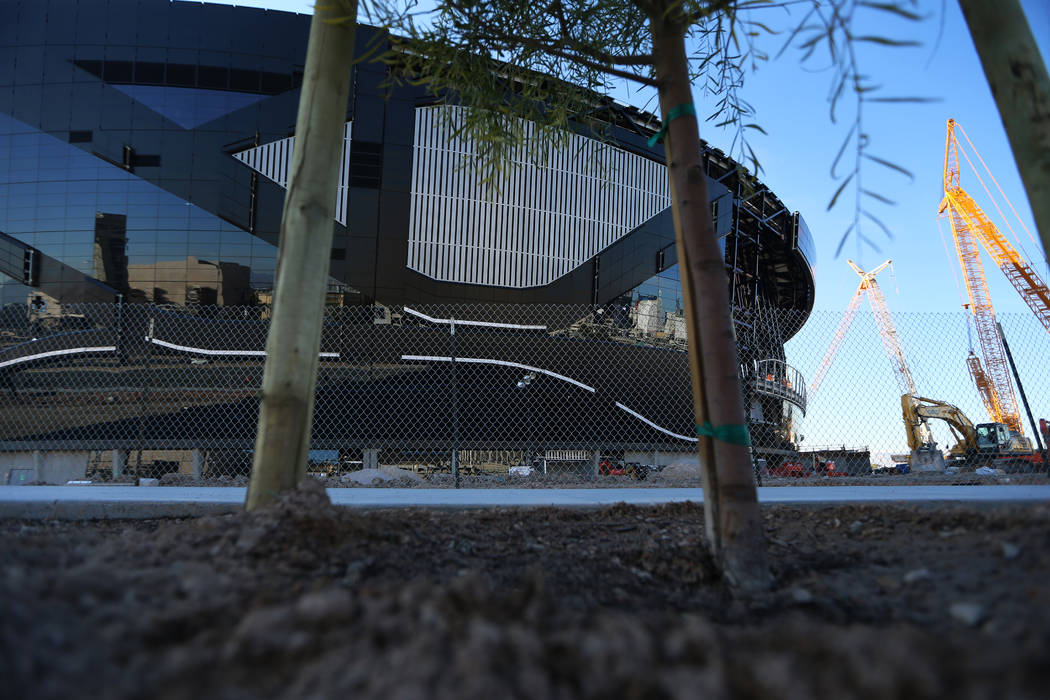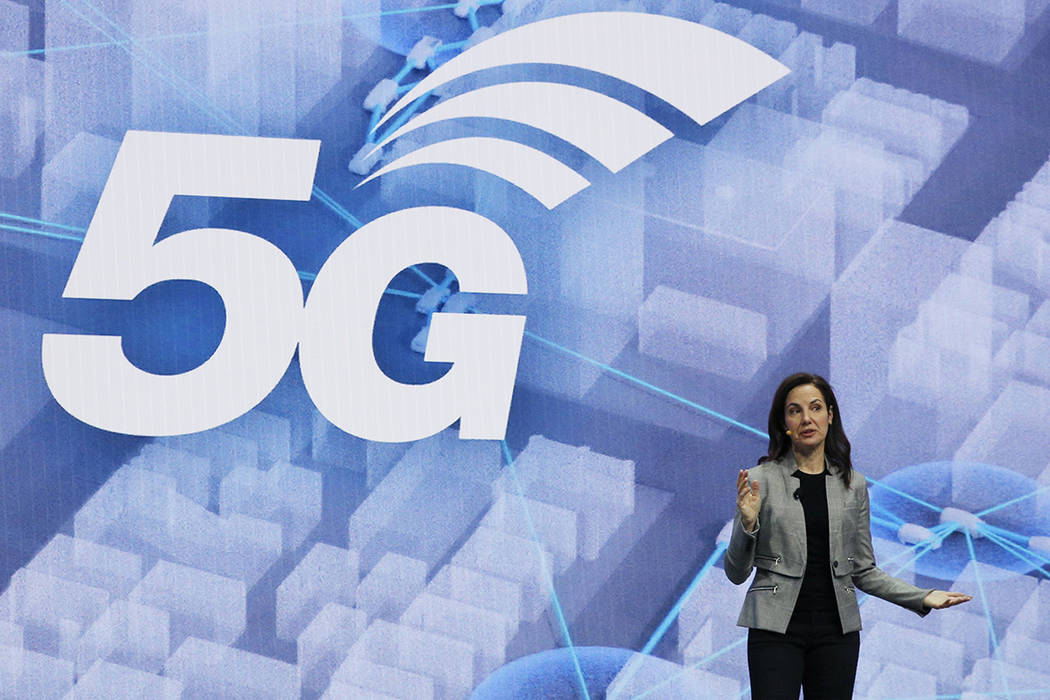5G to have a major impact on Las Vegas stadiums
As the Atlanta Hawks and Washington Wizards faced off at the 2019 NBA Summer League, the basketball teams were surrounded by more than just fans.
AT&T had stationed six 5G smartphones around the Thomas & Mack Center court, streaming a courtside perspective of every shot, rebound and steal from the game.
The quality of the video — made possible by a temporary 5G network from the carrier — was good enough to air on the ESPN app, NBA TV Canada and internationally though NBA League Pass.
But according to experts, faster download speeds are only one example of the benefits 5G coverage can bring to arenas and stadiums.
“For fans, it’s a really big upside in terms of experience,” NPD Group analyst Ben Arnold said. “It has the potential to add another dimension (to games).”
5G in Las Vegas
According to a December 2018 report from Goldman Sachs, 5G service is expected to result in download speeds 2,500 times faster than the average LTE network. All that leads to 5G smartphones that can handle larger data loads, opening doors for new apps and product developments.
Arnold said the wireless technology could be a major game-changer for fans watching sports in stadiums and arenas.
“It’s going to make augmented reality that much better, more responsive. Your phone will be able to recognize things through your camera better,” he said. “You’ll be able to see things in real time.”
5G is expected to have a major impact on stadiums in Las Vegas, which is working to establish itself as the sports capital of the U.S.
“I think it’s going to impact our stadium and all stadiums,” Raiders president Marc Badain said. “The opportunities 5G opens up for the in-game experience is pretty exciting.”
The city is already starting to see some 5G networks from carriers such as AT&T and T-Mobile. Gartner mobile services analyst Bill Menezes said faster speeds will be a major revenue driver for the arenas and stadium operators. It could also prove useful for another local industry: sports betting.
Menezes said 5G could provide a “deeper experience” to mobile sports betting, providing faster data and potentially offering enhancements such as live commentary as people place bets.
“The faster (the sports betting app) is, the more likely they are to play, and I would imagine the more bets that they may be willing to put down,” he said. “They get this more immersive experience that makes it more fun.”
Arnold said those benefits will apply to several sports, from football games at Allegiant Stadium to fast-paced games like hockey or basketball at T-Mobile Arena.
“Whether it’s the NFL or NBA, they are embracing this upcoming tech,” Arnold said. “They don’t view it as something that detracts from the performance on the first. It adds to everyone’s enjoyment of the game.”
Representatives from T-Mobile Arena did not provide a comment. Mike Lawrence, the Thomas & Mack Center assistant vice president for administration, said that while a 5G upgrade hasn’t yet taken place at the facility, officials have been in touch with the operator of the in-building distributed antenna system regarding a 5G transition.
But 5G is bound to have an impact on more than just sports-focused arenas. Jud Hannigan, CEO of Allied Esports — a California-based company that operates the HyperX Esports Arena at MGM’s Luxor — said he’s looking forward to the implementation of 5G.
“Mobile gaming is going to be pretty fantastic (with 5G); the increase in mobile gaming is going to be interesting,” he said. “The way we distribute and disseminate our content will only get better and allow people easier access. The quality will get better, and the way we share will happen faster.”
‘A more interactive experience’
Some venues already are offering a new experiential game-watching experience made possible with 5G. During the start of the 2019 NFL season, AT&T offered different activations to fans at the first 5G-enabled stadium in Dallas.
Those with 5G-enabled devices could use augmented reality on their phones to track the Dallas Cowboys’ performance and view live player stats, similar to the experience of watching a broadcast game at home. Or, if they wanted some additional entertainment, an augmented-reality game could pit them against robots digitally overlaid on the field.
Down the road, Arnold expects developers to get even more creative with 5G offerings in stadiums, with apps pointing users to the shortest concession stand line or showing a route to the nearest restroom.
“It allows for a more interactive experience that will be a draw for fans to come to the game,” Arnold said.
Menezes said venues across the country are likely getting ready for 5G coverage to catch on by looking at their networking infrastructure and communicating with different carriers.
“They’re probably engaging with the carriers … to determine OK, we’ve determined these applications that we want to do that require 5G. How can we get 5G coverage infrastructure inside our facility, what’s it going to cost, when is it going to be available and what’s the whole implementation time frame,” he said.
But 5G coverage is still in its infancy. Carriers have only just started rolling out the first stages of 5G service across the country, and a majority of consumers have yet to upgrade to 5G-enabled smartphones.
Menezes said that will take time, especially because 5G’s accelerated speeds will take a while to reach their full potential.
According to a 2020 report from the Consumer Technology Association, about 1.6 million of the 162.5 million handset devices shipped in the U.S. are expected to work with 5G networks. By 2022, 5G-enabled phones will make up about two-thirds of mobile phones shipped in the U.S.
“2020 is an inaugural year for 5G-enabled handsets,” said Lesley Rohrbaugh, director of research at CTA, during a Jan. 5 session at CES 2020.
As more and more carriers roll out their 5G capabilities, more and more handsets are doing so.
“Until people really start seeing that difference, which is going to take a while for the carriers to build into their network, we think adoption is going to be at a relatively slow pace,” he said. “Our sense it that there probably won’t be broad commercial adoption for another two or three years.
Until then, Menezes said, 5G users will see slow build in coverage speed.
“It will accelerate over time,” he said. “The carriers are working like crazy to continue expanding 5G coverage.”
Contact Bailey Schulz at bschulz@reviewjournal.com or 702-383-0233. Follow @bailey_schulz on Twitter.
























